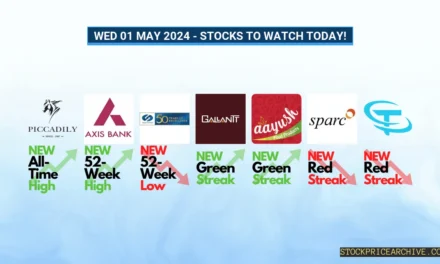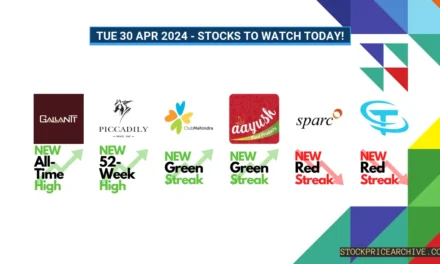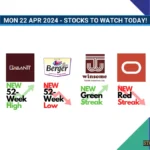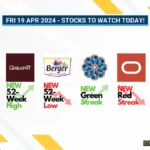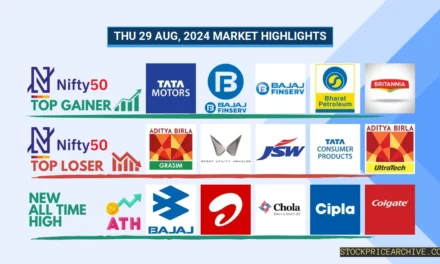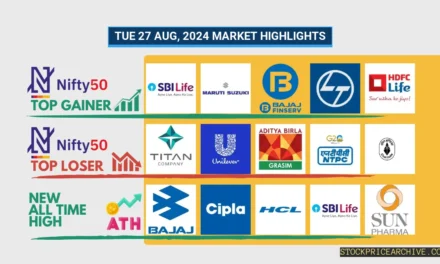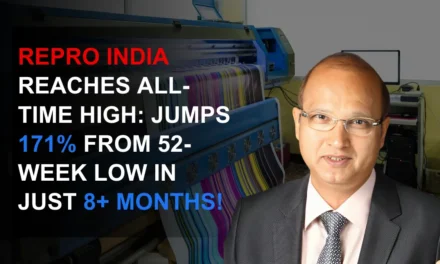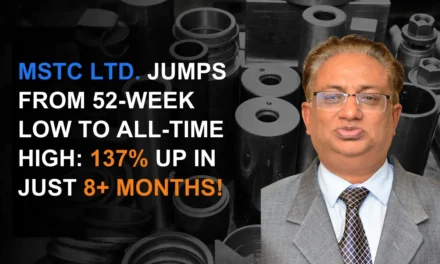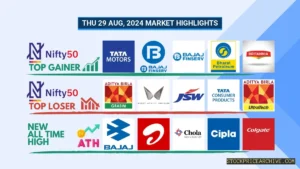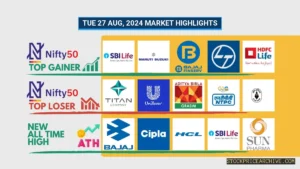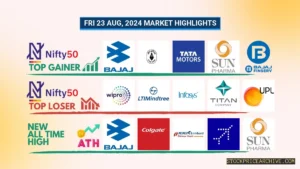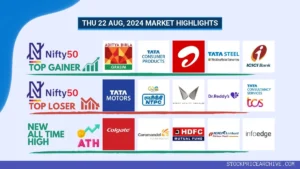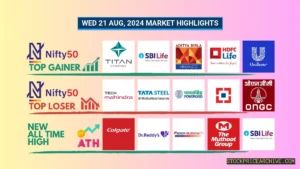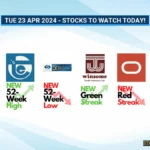
Home / Jindal Stainless Soars From 52 Week Low To All Time High Yielding 168 Return In Under A Year
Jindal Stainless Soars from 52-Week Low to All-Time High, Yielding 168% Return in Under a Year
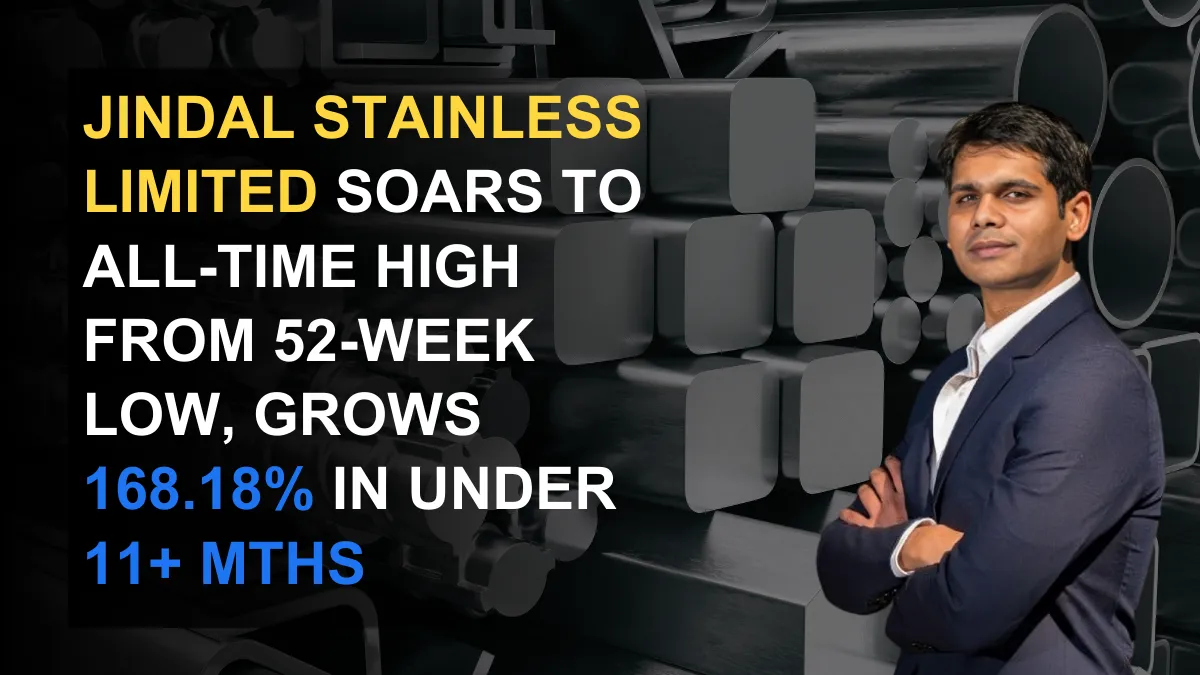
Show Table of Contents
Table of Contents
- 1: Chart: Jindal Stainless All Time High & 52 Week Low as of 10 Jan 2024
- 2: Jindal Stainless’s Record Surge to a New All-Time High
- 2.1: Factors Contributing to a Stock’s All-Time High
- 2.2: Positive Earnings Reports
- 2.3: Favorable Industry Trends
- 2.4: Positive Analyst Ratings
- 2.5: Potential Scenarios Following an All-Time High
- 3: Jindal Stainless Stock Analysis: Potential Supports and Targets
- 3.1: KEY PERFORMANCE METRICS
- 3.1.1: Jindal Stainless Fibonacci Retracement Or Support levels
- 3.1.2: Jindal Stainless Fibonacci Extensions Or Target levels
- 4: Making Informed Investment Decisions
- 4.1: Company’s Financial Health
- 4.2: Industry Outlook
- 4.3: Market Sentiment
Chart: Jindal Stainless All Time High & 52 Week Low as of 10 Jan 2024
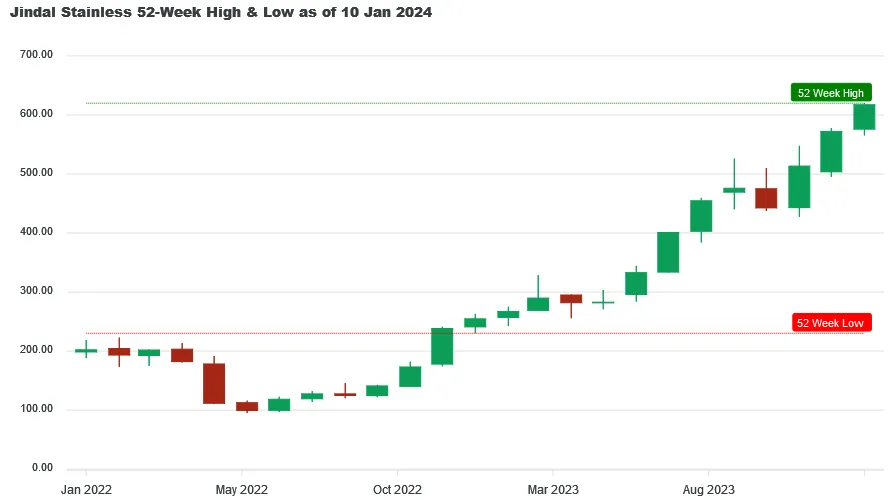
Jindal Stainless hit its 52 week low of ₹230.20 on 27 Jan 2023 and from there it move to ₹620.00 creating a brand-new All Time High on 09 Jan 2024, giving a whopping 168.18% return in just 11 months and 14 days.
If you had invested ₹10,000 at its 52-week low price, your investment would have grown to ₹26,818 by 10 Jan 2024. This represents a gain of ₹16,818 in just 11 months and 14 days. Given JSL's strong recent performance, Lets find out what opportunities lies ahead for JSL
If you had invested ₹10,000 at its 52-week low price, your investment would have grown to ₹26,818 by 10 Jan 2024. This represents a gain of ₹16,818 in just 11 months and 14 days. Given JSL's strong recent performance, Lets find out what opportunities lies ahead for JSL
Stay ahead of the market! Get instant alerts on crucial market breakouts. Don't miss out on key opportunities!
Your phone number will be HIDDEN to other users.
Jindal Stainless’s Record Surge to a New All-Time High
The all-time high of Jindal Stainless can be a result of many factors. Its previous all-time high was made on 05 January 2024 at ₹ 619.9. It took 04 days to create a new all-time high at ₹ 620 on 09 January 2024. In between, it made a low of ₹ 594.3 on 08 January 2024, implying a correction of over 4%. It may represent a change in the investors’ sentiment about the company due to improved financial condition or may represent overvaluation. Let’s go through the factors contributing to its all-time high.
Factors Contributing to a Stock’s All-Time High
Positive Earnings Reports
- In Q2 FY24, its net revenue increased by 74.81% year-on-year. It reached ₹ 9797 crores.
- In the last 3 years, its operating expenses have continuously decreased and thus contributed to the continuous increase of its operating income. In Q2 FY24, its operating income increased by 280.72% YOY and reached ₹ 1009 crores.
- In FY23, Jindal Stainless Limited paid a dividend of ₹ 1.50 after many years. We can expect the trend to continue unless it comes up with new infrastructure investments.
Favorable Industry Trends
- As India grows, the pace of urbanization will also increase. It will increase the demand for new infrastructure, which requires a considerable quantity of stainless steel. Jindal Stainless has already made its name in the Indian market and is expected to gain a significant portion of the demand that will be generated over time.
- Jindal Steel can also see an increased demand due to growth in the food & beverages industry. Stainless Steel is used for processing and storage equipment due to its non-reactive nature. Jindal Steel can either provide custom equipment or provide steel products according to the specific requirements of the manufacturers of the products used in the food & beverages industry.
- In every industry, diversification is essential to reduce the overall risk to the business. Jindal Steel’s products are used in diverse market segments such as architecture, railway, transport, consumer goods, etc. It can also consider international markets where it has a price advantage compared to other companies.
Positive Analyst Ratings
According to Simply Wall Street, based on the discounted cash flow model, the Jindal Stainless Limited share is 99.1% overvalued. The fair value of the stock is ₹ 310.16, whereas the CMP is ₹ 617.65. The price-to-earnings ratio of Jindal Stainless is 18.3x, whereas the peer average is 29.6x; thus, the stock is undervalued. It is forecasted to grow earnings and revenue by 19.7% and 12.9% per annum respectively. Since 2021, its debt has remained below its equity level, with 32.3% as the current debt/equity ratio.
Potential Scenarios Following an All-Time High
Converting numbers and candles into information can provide us with the market’s stance on the stock, which may help us make correct investment decisions. Since the listing of Jindal Stainless Limited in November 2003, it has converted an investment of ₹ 33.62 into ₹ 620, which means it gave 18.44x returns in around 20 years. In July 2022, it started its bull rally with higher highs every month except in October 2022, April 2023 and October 2023. We can expect the trends to continue so the investors may enter the stock at the price of their liking but be ready to exit the stock if it cannot create a higher high for 2 consecutive months.
Jindal Stainless Stock Analysis: Potential Supports and Targets
Tue 09 Jan 2024 - In a remarkable market development, Jindal Stainless has soared to ₹620.00, setting a brand-new All Time High record! With this surge, there are chances of it becoming volatile, as many investors may like to book their profits by exiting or closing their positions. At this time potential investors and current stakeholders should keep an eye for opportunities for entry or exit.
Below you will find Jindal Stainless's metrics highlight, potential support and targets derived using Fibonacci Retracement and Extensions method, where Golden Ratio is assumed to be a good support (entry point) and Golden Extension to be good resistance (target point)
KEY PERFORMANCE METRICS
| Metrics | Value | Occured On |
|---|---|---|
| Close Price | ₹617.35 | Wed, 10 Jan 2024 |
| 52 Week High | ₹620.00 | Tue, 09 Jan 2024 |
| 52 Week Low | ₹230.20 | Fri, 27 Jan 2023 |
| All Time High | ₹620.00 | Tue 09 Jan 2024 |
The above table shows that the close price of Jindal Stainless on Wed, 10 Jan 2024 was ₹617.35. Notably, the All-Time High is same as the 52-Week High, indicating that the all-time high was achieved recently and it cloud be a strong resistance level which would need great upward momentum to break.
It's possible that some investors might consider booking profits near the 620.00 mark, which could apply downward pressure on the stock price.
But what does this newly created milestone signify for potential investors? Lets find out.
Jindal Stainless Fibonacci Retracement Or Support levels
For those considering an entry, the Golden Ratio (61.8%) retracement level of ₹379 offers a promising point, given the likelihood of a pullback from these levels as new investors might come in at these levels.
| Retracement or Support Levels | Values | |
|---|---|---|
| S1 | 23.6% | ₹528 |
| S2 | 38.2% | ₹471 |
| S3 | 50.0% | ₹425 |
| S4 | 61.8% (Golden Ratio) | ₹379 |
| S5 | 78.6% | ₹313 |
| S6 | 52 Week Low | ₹230 |
Note: This table was last updated on Wed, 10 Jan 2024.
Jindal Stainless Fibonacci Extensions Or Target levels
For those considering an exit, the Golden Extension (161.8%) level of ₹860 offers a promising point, given the likelihood of a downward momentum from these levels as investors might start booking their profits at these levels.
| Extensions or Target Levels | Values | |
|---|---|---|
| T1 | 52 Week High | ₹620 |
| T2 | 138.2% | ₹768 |
| T3 | 161.8% (Golden Extension) | ₹860 |
| T4 | 200% | ₹1009 |
| T5 | 261.8% | ₹1250 |
Note: This table was last updated on Wed, 10 Jan 2024.
Also read: Jindal Stainless Long Term Share Price Target From 2025 to 2039
Making Informed Investment Decisions
For any stock, reaching an all-time high is a significant milestone. Still, conducting thorough research and considering various factors is essential before making investment decisions. To make informed choices that align with your investment goals and risk tolerance, one needs to analyse the company’s fundamentals, industry trends, management’s strategy, and overall market conditions.
Company’s Financial Health
- In FY23, Jindal Stainless had a debt of ₹ 3958 crores covered by a free cash flow of ₹ 1164 crores and cash & equivalents of ₹ 470 crores. It shows a significant difference between the debt and funds, which makes it essential for the company to increase the amount under free cash flow or cash & equivalents.
- In the short term, it has a liability of ₹ 10951 crores covered by assets of ₹ 15112 crores. The assets of ₹ 12188 crores cover its long-term liabilities of ₹ 4382 crores.
Industry Outlook
- We may see the steel industry shift its production methods to align with the world’s carbon reduction goals. Already, many countries have started to impose a carbon tax on imported products, thus making them too costly compared to domestically produced products. In the future, steel producers that follow carbon reduction manufacturing processes will have a significant advantage over other manufacturers.
- The Indian steel industry may remain protected from the exporters of similar products from outside the country by the Indian government. Whenever the steel products were sold below their normal price in the market, the government acted swiftly and imposed anti-dumping duties to protect the domestic steel industry. We can see similar steps taken in the future, thus protecting the industry from international influence.
Market Sentiment
Due to strong fundamentals and favourable market trends, Jindal Stainless surged to a new all-time high of ₹ 620. An increase in net revenue and a significant jump in operating income signals robust financial health, and we can see a further jump in its figures due to India’s rapid urbanisation and increasing demand in various industries. Investors should note the company’s debt levels and global shifts towards carbon-efficient manufacturing, which could impact future performance. Government protection against dumping further stabilises the domestic market, making Jindal Stainless a noteworthy contender in the steel industry. Investors need to conduct detailed research, considering factors like company fundamentals, industry trends, and financial health, to make informed investment decisions.

